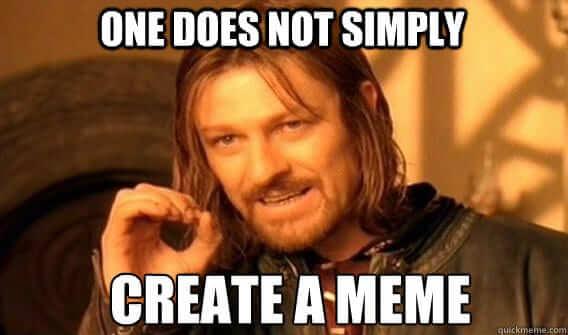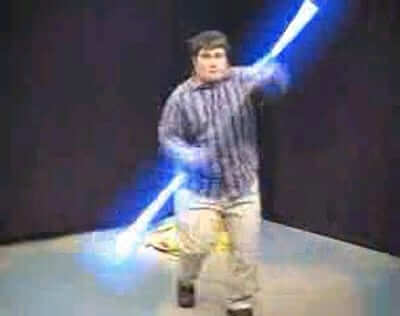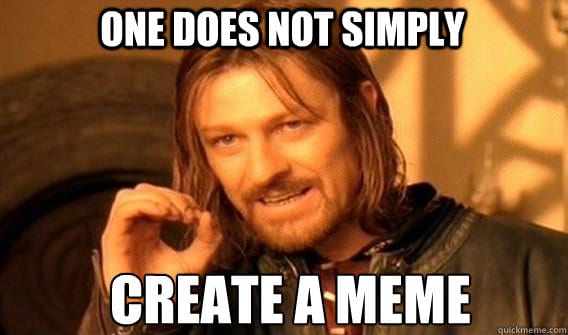

Most people could never predict that they would become a viral internet sensation overnight. Canadian teenager Ghyslain Raza never thought about this possibility of digital fame until one day he found that a video he created of himself fighting imaginary enemies with a golf-ball retriever had been uploaded on Kazaa, a collective file-sharing network. According to BBC, classmates discovered this video on a school computer and shared it, reaching around 900 million views. It was labeled as the most viral video in 2006 (Tunison, 2017). The “Star Wars Kid” video continued to be shared, sometimes remixed and edited with funny music and visual effects. Ghyslain Raza had unintentionally become a meme.
There are many internet personalities who would relish in the digital limelight that Raza inadvertently stepped into, but he did not. The sudden popularity of his video caused a severe psychological effect on Raza. He immediately faced aggressive bullying at school. “In the common room, students climbed onto tabletops to insult me,” he shared in an interview with L’Actualite. “People made fun of my physical appearance and my weight. I was labeled the ‘Star Wars Kid’… [they] were telling me to commit suicide.” Raza eventually dropped out of school before spending time in a psychiatric institution for severe depression. His parents sued the classmates who uploaded the video without permission, which led to further bullying after some in the media claimed that the family was “greedy” (Zimmerman, 2013). Raza eventually overcame the negative repercussions of his unwanted celebrity. He went on to obtain a law degree from McGill University and has been a public supporter for victims of cyberbullying.

Raza’s experience with becoming a meme sparked debate over the ethical concerns of meme creation and sharing, especially when they use images or videos that depict identifiable individuals. Many memes originate from video or pictures being “repurposed” for the goals of the meme creator, including political commentary, satire, and “lulz.” Whitney Phillips and Ryan M. Milner, co-authors of The Ambivalent Internet, emphasize that memes are never “just” memes: “The problem is that the ‘just’ framing (just joking, just a meme on the internet, just a new kind of hazing ritual) posits what we describe… as a fetishized gaze, one that obscures everything but the joke itself” (Phillips & Milner, 2017). They argue that regardless of the medium, real people are almost always affected by a meme, whether directly (as in Raza’s case) or indirectly (in the case of a general racist meme).
However, it is the age of the Internet, and who knows how all the videos or images that we post or comment on will be taken by others. Screenshots and online archives simply continue the permanence and ability of others to comment on this content, often in ways we can’t anticipate. The consequences of being immortalized in a popular meme are difficult to predict, given the ever-evolving use of the meme. Sometimes, these unintended uses of images, videos, or other content seems to be a boon to the unsuspecting person depicted in the meme. Kyle Craven, better known as the subject of the “Bad Luck Brian” meme, has made “between $15,000 and $20,000 in [three years] between licensing deals and T-shirts” (Garsd, 2015). “Overly Attached Girlfriend,” a.k.a. Laina Morris, used her meme fame to launch her comedic acting career. Memes can even be considered a part of modern language, signaling a way of communicating among a technological in-group using digital discourse. Above all, memes strive to be clever, creative, and humorous in their appropriation of content and images that most likely where not intended to be comedic in that specific way.
As with many internet phenomena, meme creation often foregrounds a conflict between the freedom of expression of creative meme makes and the privacy concerns of those that may find themselves featured in the meme. How much control should we have over our images and videos, and at what cost to the creativity of the digital world?
Discussion Questions:
- What are the ethical issues with taking a picture or video and making it into a humorous meme?
- What concerns about consent are implicated in making image-based memes? Are these concerns with consent present in our other commentary or use of public images?
- Does the intention of the meme maker matter? Does it matter if they do not know (or care) about the subject depicted in the image or video content that the meme is based upon?
- What ethical guidelines would you propose for those creating image-based memes? How might these avoid harmful consequences or ethical transgressions—foreseen or unforeseen?
Further Information:
Garsd, Jasmine. “Internet Memes and ‘The Right To Be Forgotten.’” NPR, March 3, 2015. Available at: https://www.npr.org/sections/alltechconsidered/2015/03/03/390463119/internet-memes-and-the-right-to-be-forgotten
Phillips, Whitney and Milner, Ryan. “The Harvard Case Shows a Meme Is Never ‘Just’ A Meme.” Motherboard, June 6, 2017. Available at: https://motherboard.vice.com/en_us/article/zmen4y/the-harvard-case-shows-a-meme-is-never-just-a-meme
Phillips, Whitney and Milner, Ryan. “The Complex Ethics of Online Memes.” The Ethics Centre, October 26, 2016. Available at: http://www.ethics.org.au/on-ethics/blog/october-2016/the-complex-ethics-of-online-memes
Tunison, Mike. “The incredibly sad saga of Star Wars Kid.” The Daily Dot, August 6, 2017. Available at: https://www.dailydot.com/unclick/star-wars-kid-meme/
Weisblott, Marc. “‘Star Wars Kid’ goes on media blitz 10 years later.” Canada.com, May 9, 2013. Available at: https://o.canada.com/entertainment/celebrity/star-wars-kid-goes-on-a-media-blitz-10-years-later
Zimmerman, Neetzan. “‘Star Wars Kid’ Breaks Silence, Says Online Fame Made Him Suicidal.” Gawker, May 10, 2013. Available at: https://gawker.com/star-wars-kid-breaks-silence-says-online-fame-made-h-499800192
Authors:
Alex Purcell & Scott R. Stroud, Ph.D.
Media Ethics Initiative
Center for Media Engagement
University of Texas at Austin
January 14, 2018
This case study can be used in unmodified PDF form for classroom or educational settings. For use in publications such as textbooks, readers, and other works, please contact the Center for Media Engagement.
Ethics Case Study © 2019 by Center for Media Engagement is licensed under CC BY-NC-SA 4.0



